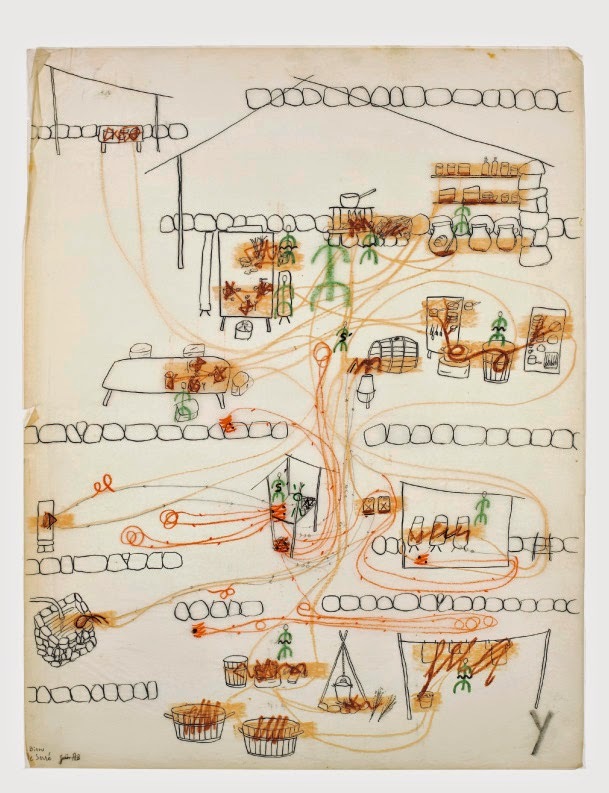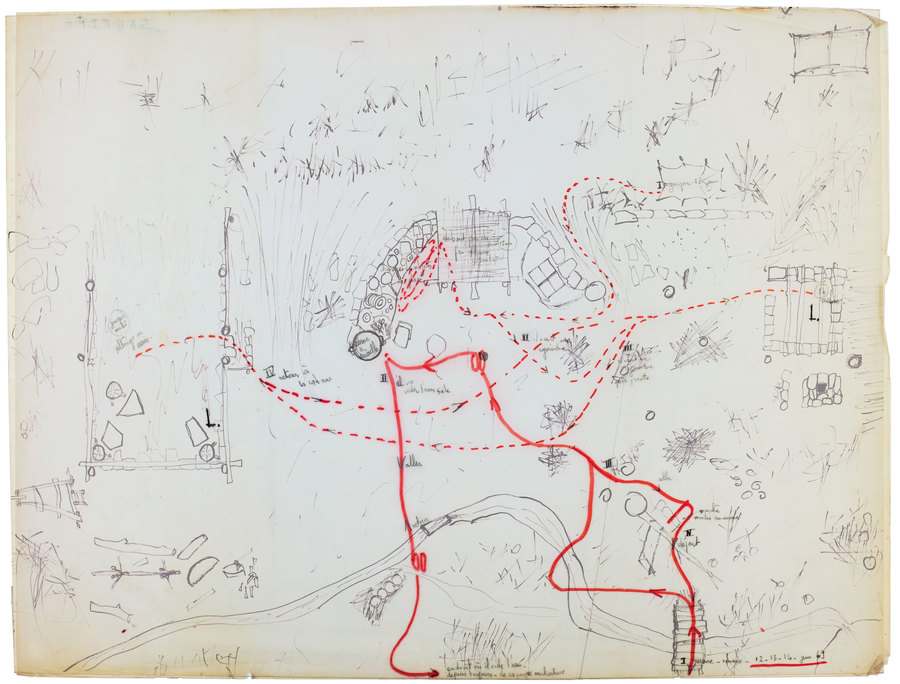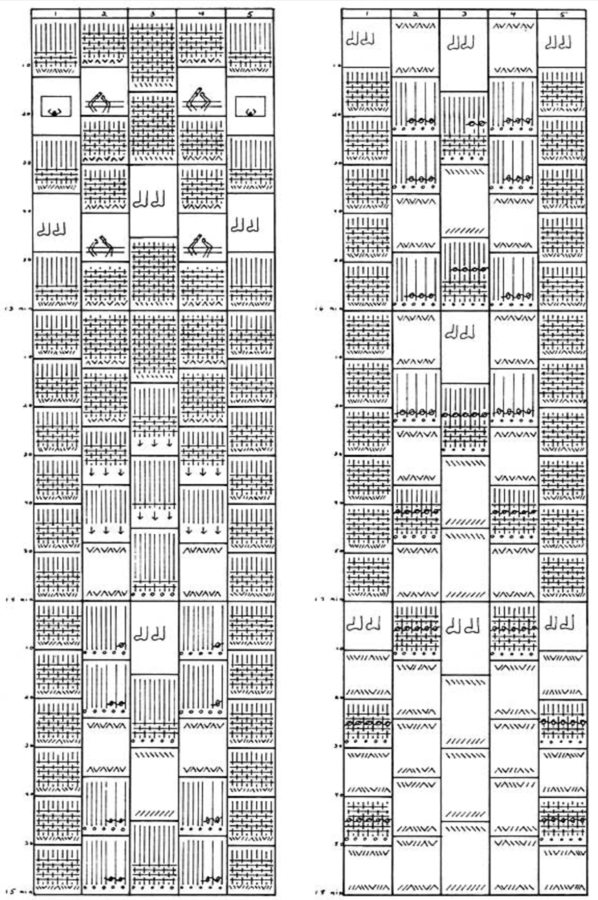Before code, beyond speech
Prelude
Lucy Siyao Liu is an artist and architectural designer based in New York. Her work addresses representational techniques and the disjunctions that occur in imaging technologies, with an emphasis on exploring systems of nature through drawings and animations. She is the creator and co-editor of PROPS PAPER, a weekly newspaper on image research. She teaches drawing for the Department of Architecture and for the Art, Culture and Technology (ACT) Program at MIT. Lately she has been drawing clouds.
Conversation
Before code, beyond speech
For TCI x Are.na's Library of Practical and Conceptual Resources, visual artist and designer Lucy Siyao Liu has created a collection of drawing-based instructional methods.
As told to Lucy Siyao Liu, 596 words.
Codified systems of communication—such as writing, reading, and speaking—rely on pre-existing infrastructures of meaning to make sense. Concepts, emotions, and values are siphoned through the filter of language to become programmable and efficient. In this way, today’s communication systems regulate how we think and perpetuate spaces where nothing can be said without immediate interpretation.
I wonder: how we can escape the tyranny of monolinguistic thinking? How do we think in images? How do we think in lines? How can we expand how we communicate?
In the 1950s, French pedagogue, writer, and filmmaker Fernand Deligny lived and worked with a group of autistic children who had been deemed by society to be hors de parole (“outside of speech”). Rather than attempting to condition the children to conform to dominant practices of communication, Deligny observed their behaviours to understand their unique modes of thinking and being. From this observation, he began creating drawings that mapped the children’s spatial activities. He called these maps lignes d’erres, or “wander lines.” Deligny used these lines as maps for navigating how the children related to each other and to their world. In the absence of language or speech, Deligny and the children communicated through drawings.
As a form of communication, drawing incorporates ambiguity, slippage, and intuition—all qualities that have been systematically eliminated by codified systems for the sake of clarity and precision in communication. What might happen if our systematized modes of communication left room for improvisation? By drawing, we can access a primal interface through which we can experiment with alternative ways of relating to each other, and to our world.
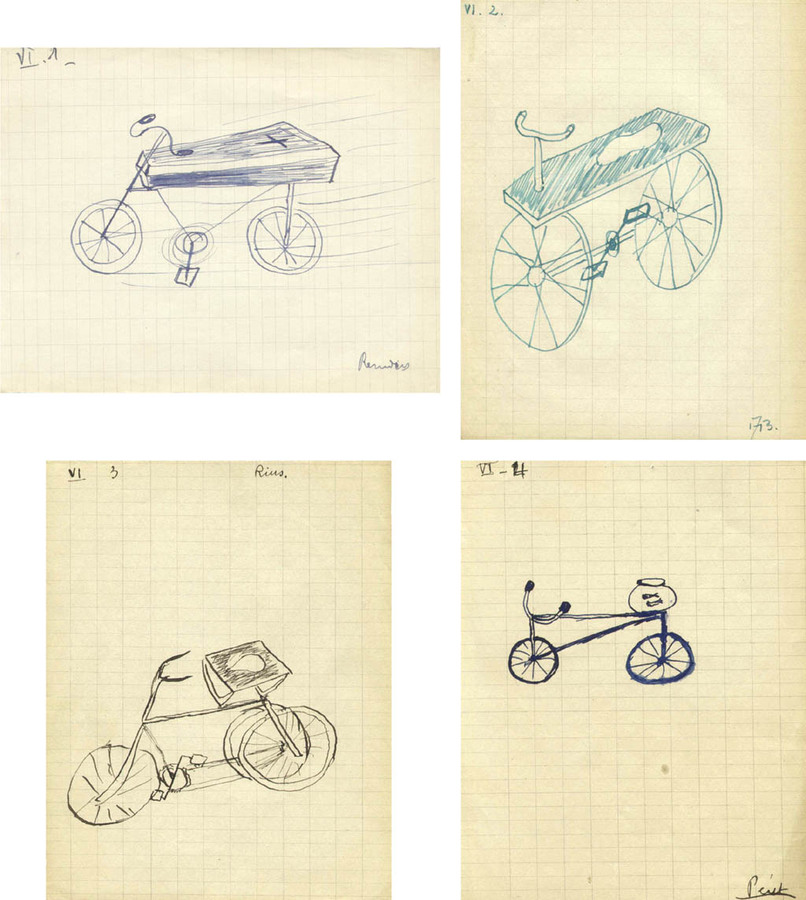
“Le Cercueil et Velo” (The Coffin and the Bicycle), Jeu de Dessin Communique (Game of Communicated Drawing), 1938

Many ideas require a more specific mode of communication to transfer an idea. For example, instructions—i.e. the information we rely upon to construct, assemble, and operate—are dependent on context and legibility in order to be effective. Instructions are optimistic. They are created with accessibility and usability in mind, to establish a common ground for sharing and learning. However, instructions are more often conveyed through modes of language, such as text and code, rather than through drawings. This is because in drawings, meaning-making escapes standardization. As Ikea’s deputy packaging manager, Allan Dickner, once said: “A newspaper in Sweden described Ikea [furniture assembly] as something between civil engineering and captaining a submarine, and I think that’s a good description.”
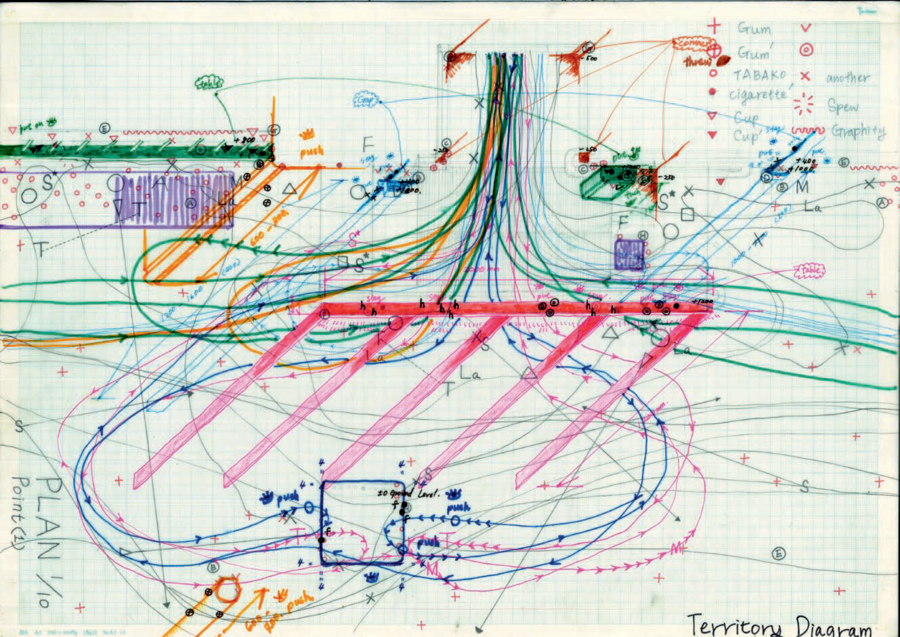
Fig. 4. 'Deceptive Détournement' of the Physical, after 'The Détournement' of the 'Social/Human' (Drawn by Natsuko Kanzaki)

I’m curious about the convergence of these two modes of communication—drawing, and instruction. How can instructions relay various techniques and skills, while simultaneously leaving space to accommodate evolution and interpretation?
For The Library of Practical and Conceptual Resources, I’ve put together a channel called Drawing Instructions, which is composed of a collection of drawing-based instructional methods. It is my hope that these technical frameworks can help us learn to know, think, and imagine in new ways—and can, as a whole, help to expand our knowledge toolkits to be more pluralistic.
- Name
- Lucy Siyao Liu
- Vocation
- Visual artist, architectural designer

Some Things
Pagination




